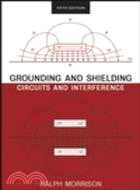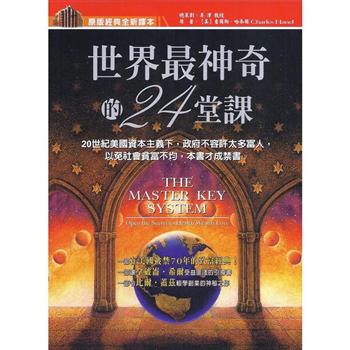| FindBook |
有 1 項符合
GROUNDING AND SHIELDING CIRCUITS AND INTERFERENCE 5/E的圖書 |
 |
GROUNDING AND SHIELDING CIRCUITS AND INTERFERENCE 5/E 作者:RALPH MORRISON 出版社:全華圖書股份有限公司(全華經銷) 出版日期:2007-01-01 規格:24*16cm / 精裝 / 193頁 |
| 圖書館借閱 |
| 國家圖書館 | 全國圖書書目資訊網 | 國立公共資訊圖書館 | 電子書服務平台 | MetaCat 跨館整合查詢 |
| 臺北市立圖書館 | 新北市立圖書館 | 基隆市公共圖書館 | 桃園市立圖書館 | 新竹縣公共圖書館 |
| 苗栗縣立圖書館 | 臺中市立圖書館 | 彰化縣公共圖書館 | 南投縣文化局 | 雲林縣公共圖書館 |
| 嘉義縣圖書館 | 臺南市立圖書館 | 高雄市立圖書館 | 屏東縣公共圖書館 | 宜蘭縣公共圖書館 |
| 花蓮縣文化局 | 臺東縣文化處 |
|
|
- 圖書簡介
The fifth edition of Grounding and Shielding has been revised throughout. Material has been added on transmission lines, radiation and printed circuit design, all of which are of great current interest because of the smaller dimensions of electronic devices.
- 作者簡介
RALPH MORRISON is a consultant and lecturer in the area of interference control and electronics. He has thirty years of design and consulting experience, was president of Instrum for more than a decade, and has authored Noise and Other Interfering Signals, Grounding and Shielding in Facilities, and Solving Interference Problems in Electronics, all published by Wiley.
- 目次
Preface to the Fifth Edition.
1. Voltage and Capacitance.
1.1. Introduction.
1.2. Charges and Electrons.
1.3. The Electric Force Field.
1.4. Field Representations.
1.5. The Defi nition of Voltage.
1.6. Equipotential Surfaces.
1.7. The Electric Force Field between Two Conducting Plates.
1.8. Electric Field Patterns.
1.9. The Energy Stored in an Electric Field.
1.10. Dielectrics.
1.11. The D Field.
1.12. Capacitance.
1.13. Mutual Capacitance.
1.14. Displacement Current.
1.15. Energy Stored in a Capacitor.
1.16. Forces in the Electric Field.
1.17. Capacitors.
2. Magnetics.
2.1. Magnetic Fields.
2.2. Biot and Savart’s Law.
2.3. The Solenoid.
2.4. Faraday’s Law and the Induction Field.
2.5. Inductance.
2.6. The Energy Stored in an Inductance.
2.7. Magnetic Field Energy in Space.
2.8. The Magnetic Circuit.
2.9. A Magnetic Circuit with a Gap.
2.10. Small Inductors.
2.11. Self- and Mutual Inductance.
2.12. Transformer Action.
2.13. Hysteresis and Permeability.
2.14. Eddy Currents.
2.15. The Transport of Electrical Energy.
2.16. Poynting’s Vector.
2.17. Transmission Lines Introduction.
2.18. Transmission Line Operations.
2.19. Transmission Line Field Patterns.
2.20. Interfering Fields.
3. Utility Power and Facility Grounding.
3.1. Introduction.
3.2. History.
3.3. Semantics.
3.4. The Earth as a Conductor.
3.5. The Neutral Connection to Earth.
3.6. Ground Potential Differences.
3.7. Field Coupling to Power Conductors.
3.8. Neutral Conductors.
3.9. K-Factor in Transformers.
3.10. Ungrounded Power.
3.11. A Request for Power.
3.12. Earth Power Currents.
3.13. Line Filters.
3.14. Isolated Grounds.
3.15. Facility Grounds—Some More History.
3.16. Lightning.
3.17. Lightning and Facilities.
4. Analog Circuits.
4.1. Introduction.
4.2. Instrumentation.
4.3. History.
4.4. The Basic Shield Enclosure.
4.5. The Enclosure and Utility Power.
4.6. The Two-Ground Problem.
4.7. Instrumentation and the Two-Ground Problem.
4.8. Strain-Gauge Instrumentation.
4.9. The Floating Strain Gauge.
4.10. The Thermocouple.
4.11. The Basic Low-Gain Differential Amplifi er.
4.12. Shielding in Power Transformers.
4.13. Calibration and Interference.
4.14. The Guard Shield above 100 kHz.
4.15. Signal Flow Paths in Analog Circuits.
4.16. Parallel Active Components.
4.17. Feedback Stability—Introduction.
4.18. Feedback Theory.
4.19. Output Loads and Circuit Stability.
4.20. Feedback Around a Power Stage.
4.21. Constant-Current Loops.
4.22. Filters and Aliasing Errors.
4.23. Isolation and DC-to-DC Converters.
4.24. Charge Converter Basics.
4.25. Guard Rings.
4.26. Thermocouple Effects.
4.27. Guard Switching.
4.28. Digital Control.
5. Radiation.
5.1. Handling Radiation and Susceptibility.
5.2. Radiation: What Is It?
5.3. The Dipole Antenna.
5.4. Wave Impedance.
5.5. Field Strength and Antenna Gain.
5.6. Radiation from Loops.
5.7. E-Field Coupling to a Loop.
5.8. A Note on Sine Wave Analysis.
5.9. Approximations for Pulses and Square Waves.
5.10. Radiation from a Printed Circuit Board.
5.11. The Sniffer and the Antenna.
5.12. Solar Magnetic Storms.
5.13. Radiation from the Earth.
6. Hardware.
6.1. Cables with Foil Shields.
6.2. Coaxial Cables.
6.3. Low-Noise Cables.
6.4. Transfer Impedance.
6.5. Wave Guides.
6.6. Electromagnetic Fields Over a Ground Plane.
6.7. Skin Effect.
6.8. Ohms per Square.
6.9. Fields and Conductors.
6.10. Conductive Enclosures—Introduction.
6.11. Coupling through Enclosure Walls by an Induction Field.
6.12. Refl ection and Absorption of Field Energy at a Conducting Surface.
6.13. Independent Apertures.
6.14. Dependent Apertures.
6.15. Honeycombs.
6.16. Summing Field Penetrations.
6.17. Power Line Filters.
6.18. Back Shell Connectors.
6.19. H-Field Coupling.
6.20. Gaskets.
6.21. Finger Stock.
6.22. Glass Apertures.
6.23. Guarding Large Transistors.
6.24. Mounting Components on Surfaces.
6.25. Zappers.
7. Digital Electronics.
7.1. Introduction.
7.2. Circuit Board Material.
7.3. The Two-Sided Circuit Board.
7.4. Multilayer Circuit Boards.
7.5. Ground Planes and Digital Circuit Boards.
7.6. Clocked Logic.
7.7. The Transmission of a Single Logic Signal.
7.8. Decoupling Capacitors.
7.9. The Power Plane.
7.10. The Ground and Power Plane Capacitance.
7.11. Using Vias.
7.12. Decoupling Capacitors as Transmission Lines.
7.13. Characteristic Impedance Control.
7.14. Radiation from Digital Boards.
7.15. Measurement Problems—Ground Bounce.
7.16. High Clock Rates.
7.17. Balanced Transmission.
7.18. Ribbon Cable and Connectors.
7.19. Daughter Boards.
7.20. Mixing Analog and Digital Circuits.
7.21. Optical Isolation.
7.22. Gold Plating.
7.23. GHz Notes.
8. Facility Hardware.
8.1. Ground Planes.
8.2. A Facility Ground Plane Using Stringers.
8.3. Other Ground Planes.
8.4. Ground Planes and Remote Sites.
8.5. Extending Ground Planes.
8.6. Separately Derived Power.
8.7. Surge Protection.
8.8. The Isolation Transformer.
8.9. Screen Rooms.
8.10. Motor Controllers.
8.11. A True Story.
References.
Index.
|











